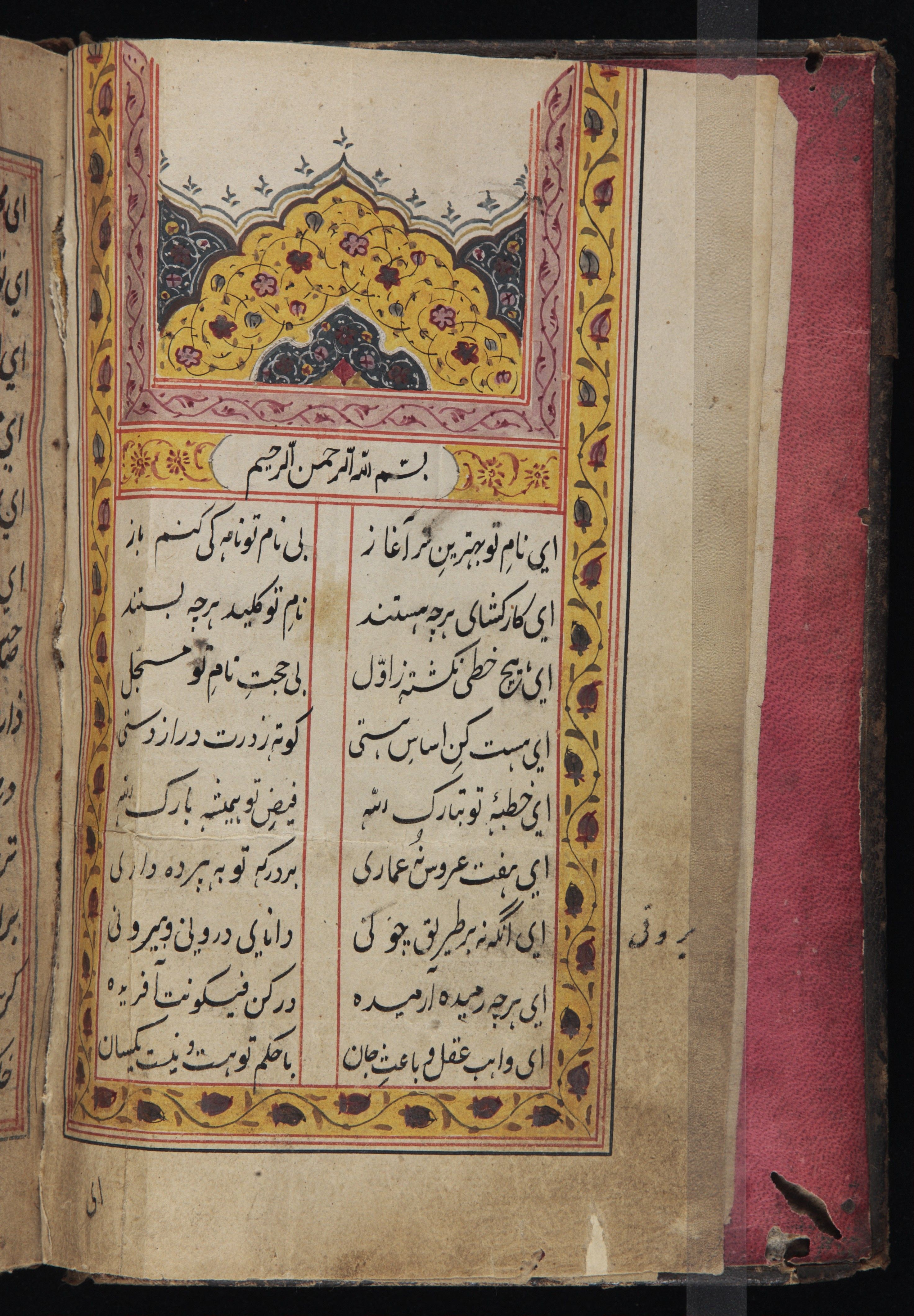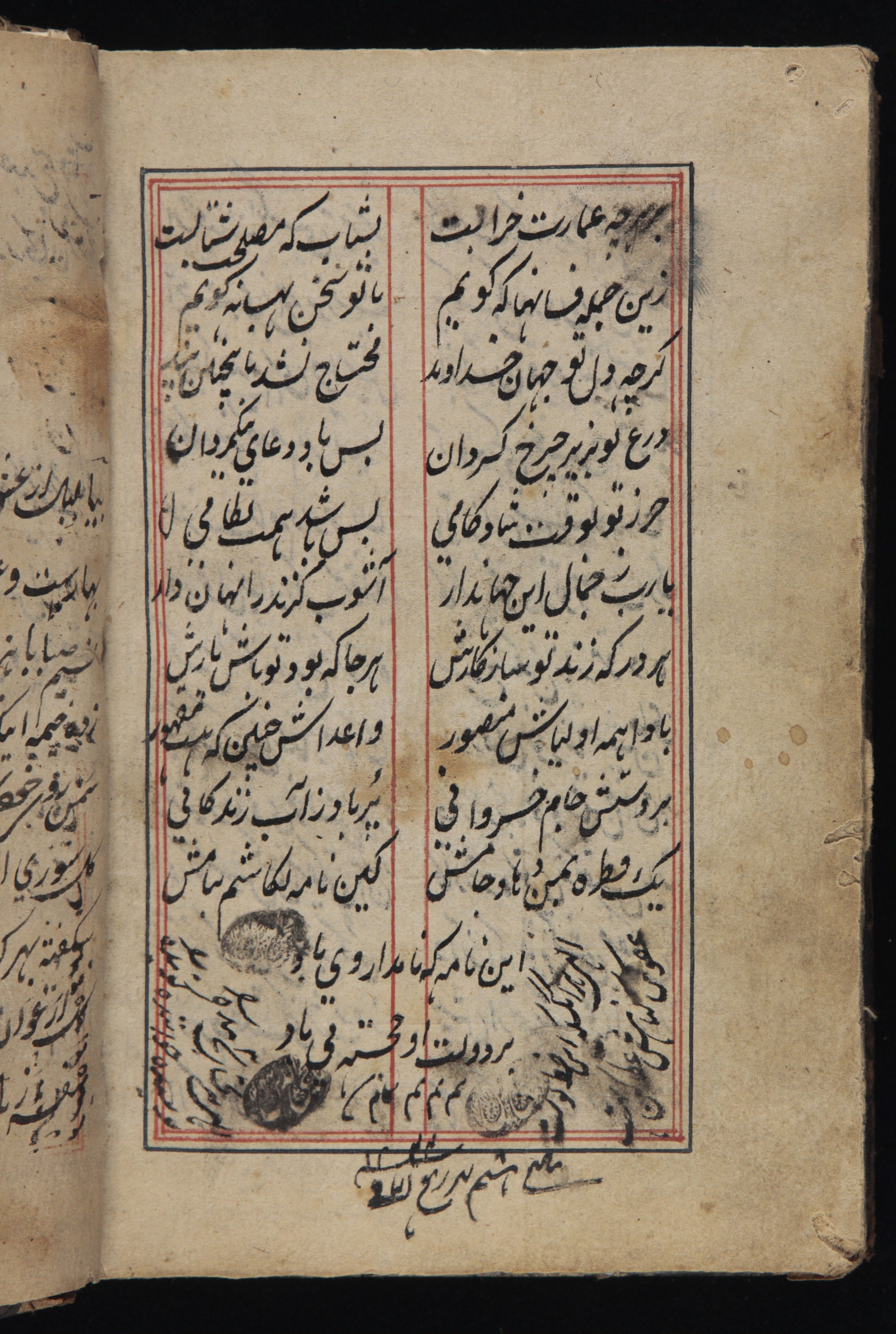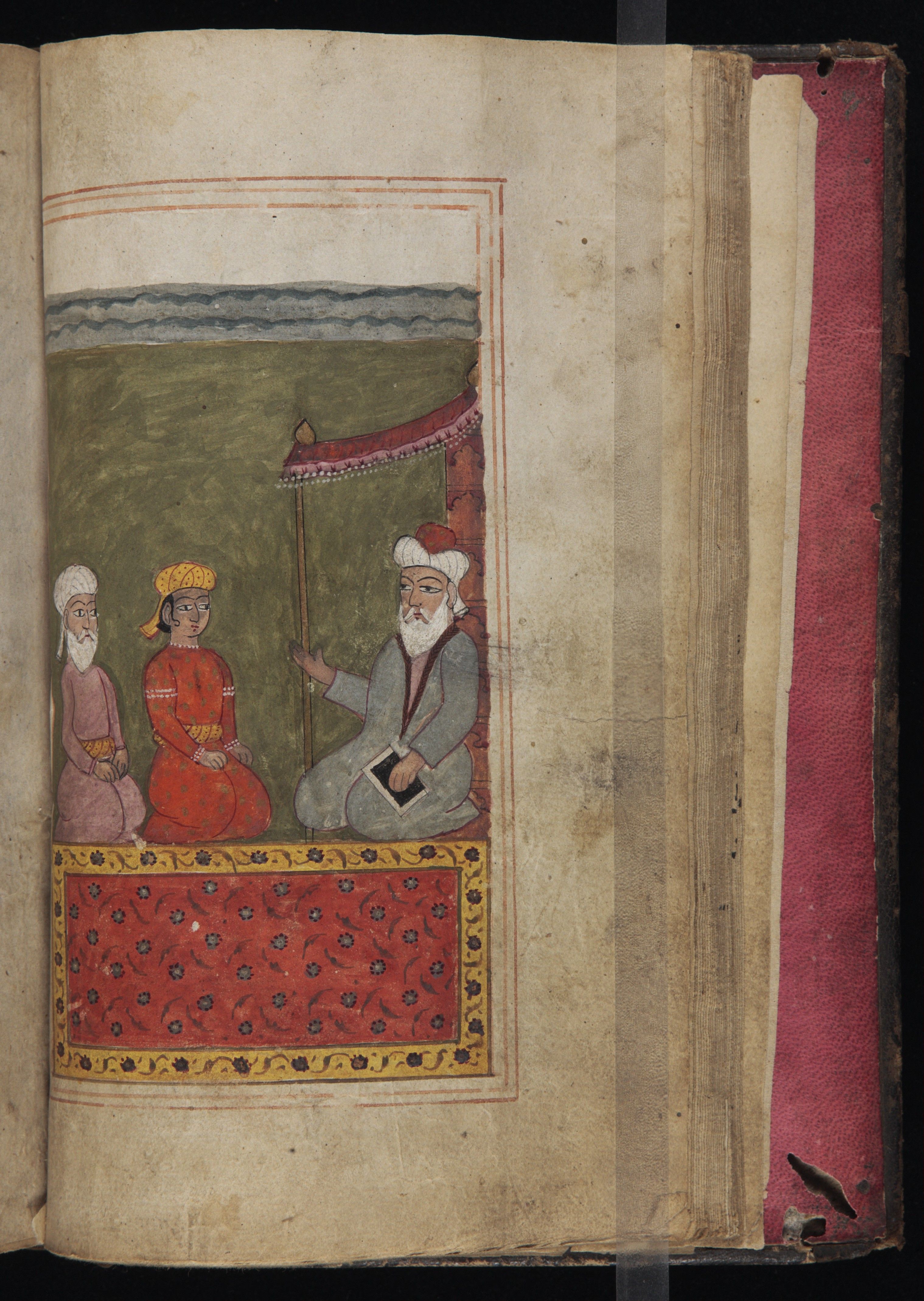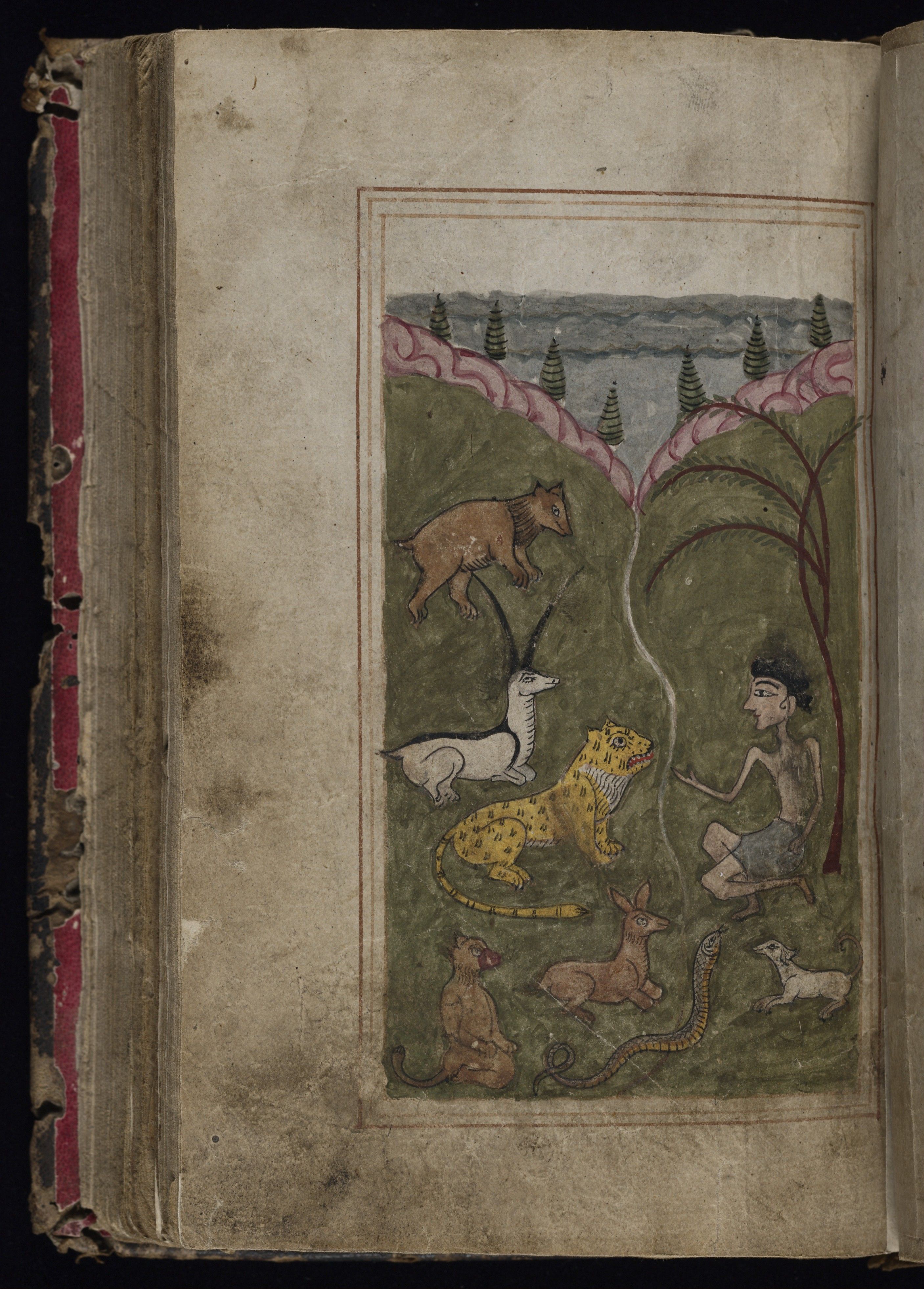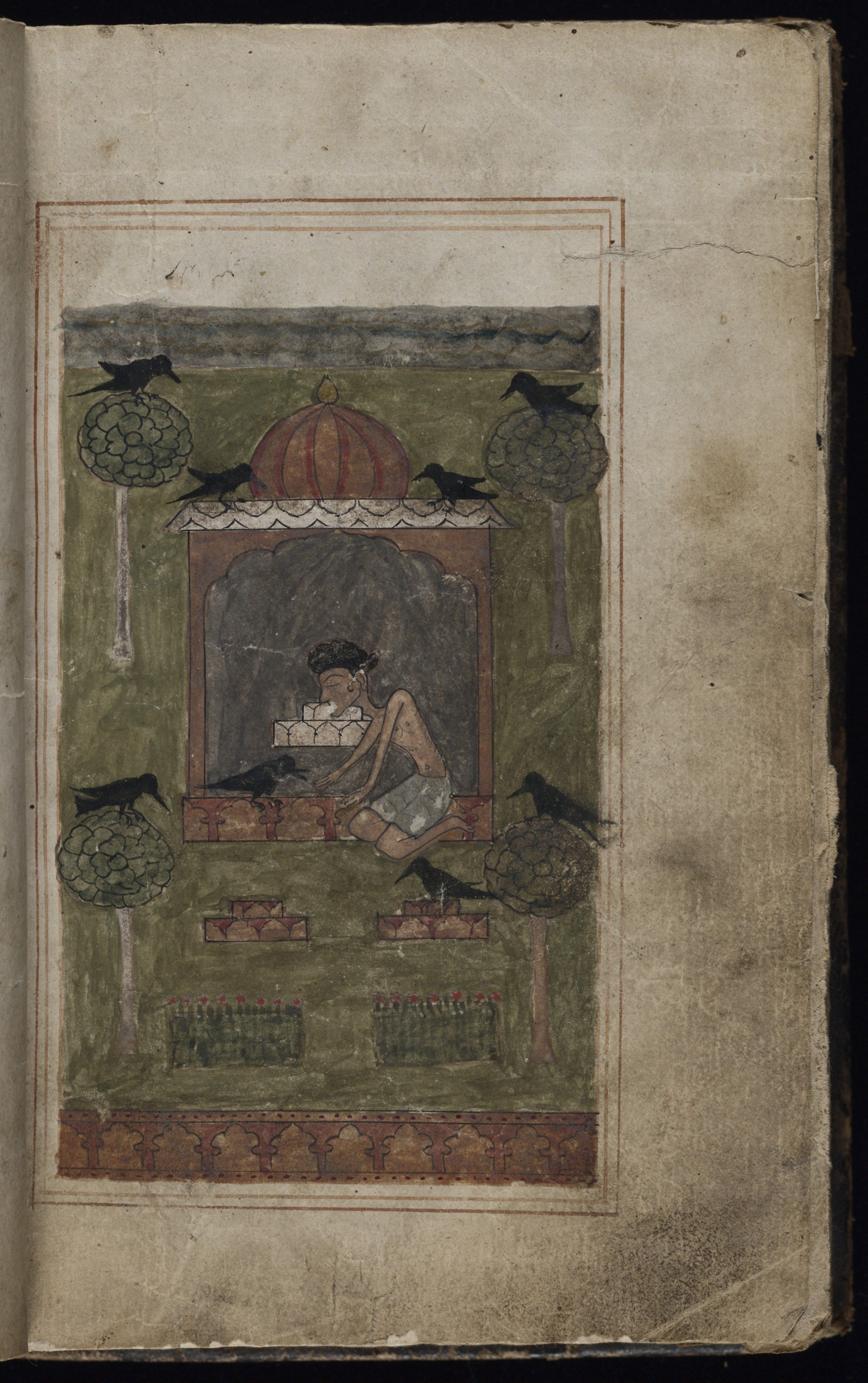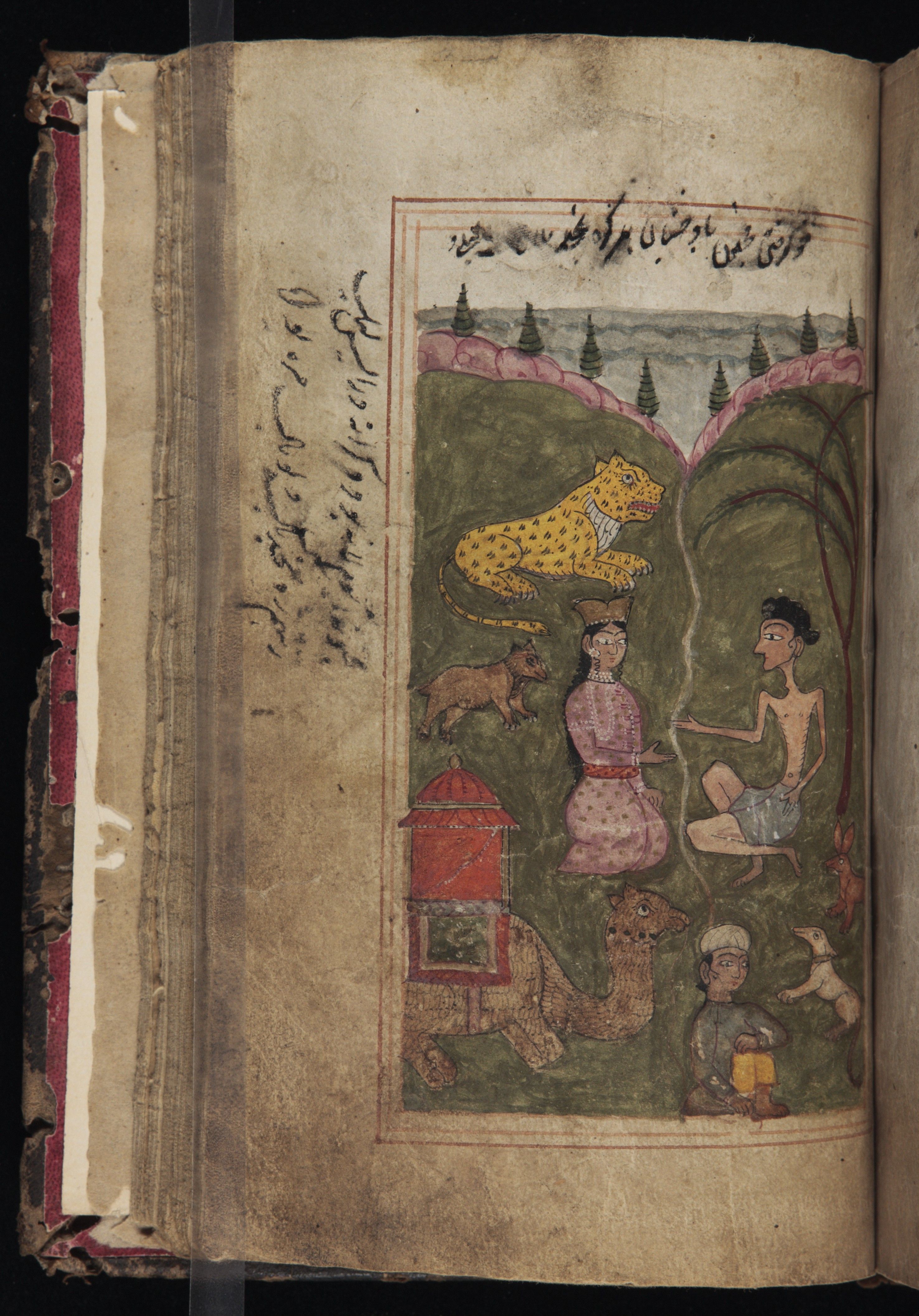Layla va Majnūn (1828)
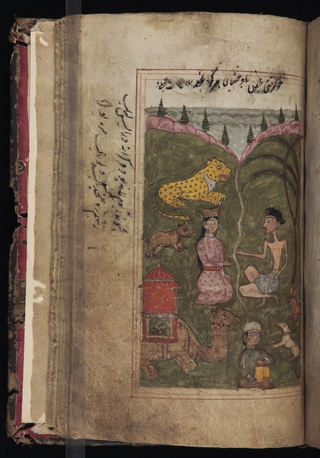
Layla va Majnūn (1828), Niẓāmī Ganjavī, India, 19th century
Accession no. Persian MSS 136
Beinecke Rare Books and Manuscripts Library
Nizami Ganjavi’s Layla and Majnun tells the tale of the seventh-century Bedouin Qais who falls deeply and madly in love with Layla, winning him the titular name, ‘magnum’ or ‘madman.’ This epic love poem represents the third poem in the Khamsa (Quintet) of Nizami, arguably his most well-known work. This particular manuscript was copied on Rabi al-Sani 1244 A.H. (1828 A.D.) in India and reveals, in its artistic embellishments and visual details, the cultural diffusion of this epic to the Indian Subcontinent. The calligrapher is unknown, however, the manuscript was cataloged by the German Orientalist Carl Hermann Ethé. This 17 cm by 11 cm manuscript features a relatively well-preserved script and binding.
Nizami’s Layla and Majnun was adapted from a fifth-century Arabic tale and written as part of his Khamsa in 1188 in Persian. Nizami’s adaptation of this story follows the poet Qais, ‘Majnun’ who hopelessly longs to be with the beautiful Layla. As the story goes, Layla’s parents, who disapprove of Majnun, marry her to another man which sends a devastated Majnun to flee into isolation. Consumed by his thoughts of Layla, Majnun retreats into the wild and adopts an intensely ascetic lifestyle. While Layla is married to another man, she remains faithful to Majnun and even attempts to visit him in his isolation. The story finally concludes with Layla passing away as a consequence of her broken heart and separation from her true love. Majnun, too, passes away at her grave in hopes of their final reunion in the afterlife.
Sources:
Chelkowski, Peter J., and Niẓāmī Ganjavī. Mirror of the Invisible World: Tales from the Khamseh of Nizami. New York, NY: Metropolitan Museum of Art, 1975.
P. Soucek, “Nizami on Painters and Painting,” Islamic Art in the Metropolitan Museum of Art, New
York: Metropolitan Museum of Art, 1972.
Flip through the collection
